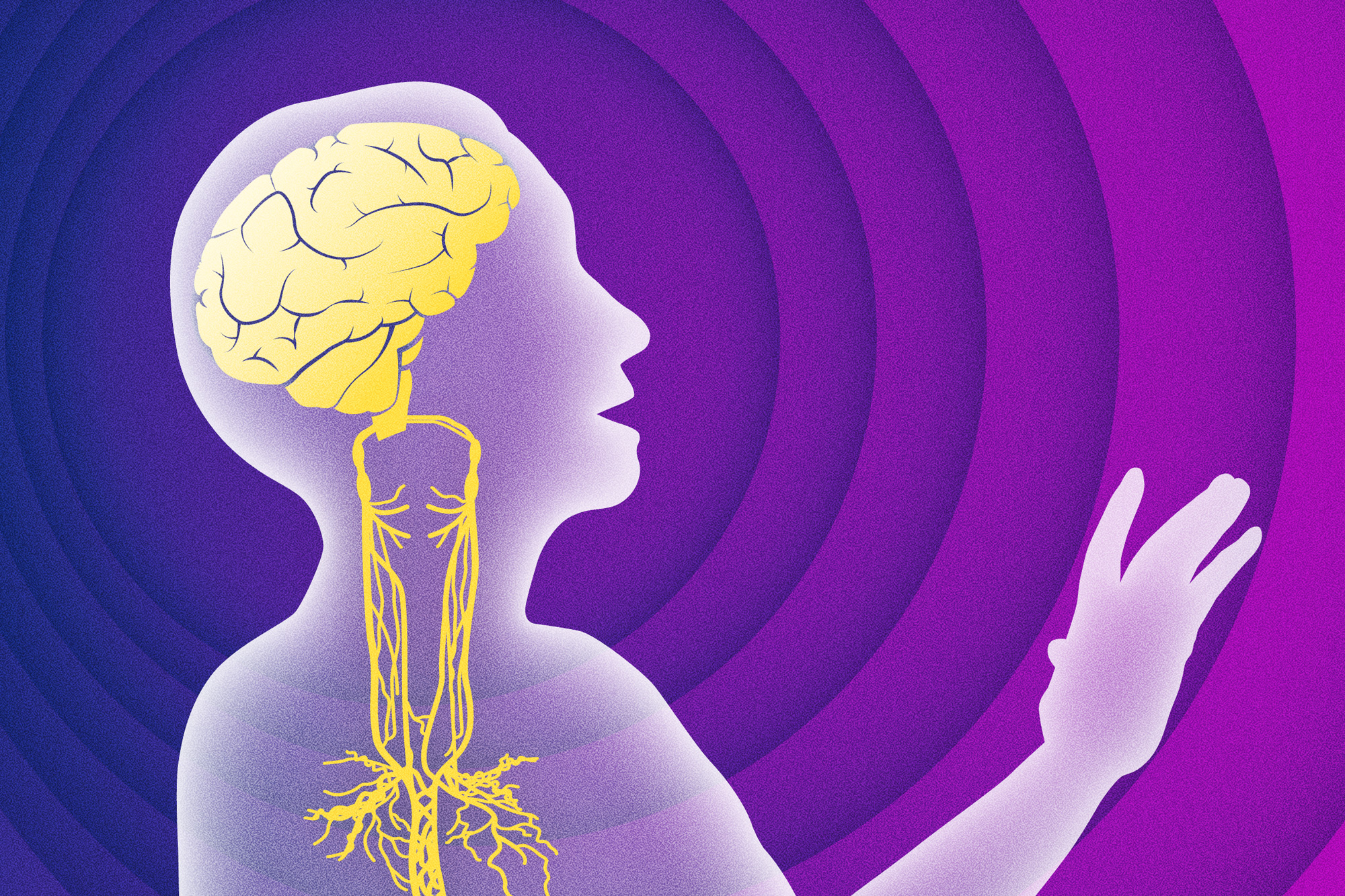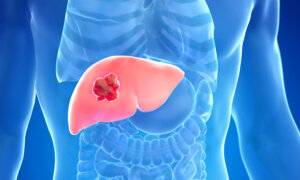Cognitive decline doesn’t happen overnight. People can live with Alzheimer’s disease and its various stages for a decade or longer before dementia becomes severe. Consequently, interest in earlier diagnosis and interventions has grown. One focus has been the vagus nerve.
“The vagus nerve is a key pathway to slow or even reverse this decline,” naturopathic doctor Nasha Winters told The Epoch Times.
Protects the Brain
In neurodegenerative conditions, such as Alzheimer’s, inflammation speeds up neuron (brain cell) damage.
The vagus nerve helps maintain healthy blood flow and oxygen to the brain. It also supports gut-brain communication. When working correctly, the vagus nerve fosters an anti-inflammatory, brain-protective milieu that could slow or prevent neurodegenerative conditions, according to Winters.
The vagus nerve is also directly involved in dorsal vagal shutdown.
Dorsal vagal shutdown is also called a “freeze” reaction. It is a survival mechanism triggered by extreme stress or threats. Although it is protective in the short term, long-term activation can disrupt brain function, contributing to cognitive difficulties.
“Many people might be familiar with the idea of freezing in response to a crisis, but fewer might understand the prolonged disconnection and withdrawal that can follow,” Megan Neff, a psychologist with a doctorate in clinical psychology, told The Epoch Times.
Dorsal vagal shutdown significantly slows down both the body and the mind, and it can show up in different ways, including physical immobility, mental fog, difficulty thinking clearly, and memory loss, according to Neff.
The vagus nerve brings the body back to calmness after stress.
“Strengthening and balancing the autonomic nervous system and vagus nerve can protect brain health,” Neff said.
Upregulates the Nervous System
The nervous system can be regulated and brought back into balance. This can be achieved via invasive methods, such as an implanted device targeting the vagus nerve in the neck region, or noninvasive methods, such as devices that stimulate the nerve through the ear. Natural techniques such as humming, chanting, and grounding can also activate the vagus nerve.
Vagus nerve stimulation (VNS) devices have been shown to improve cognition, especially in early Alzheimer’s disease, while invasive VNS has improved memory and learning for up to two years. It is seen as a promising treatment for Alzheimer’s, as it reduces the buildup of harmful amyloid-beta plaques (proteins that are a hallmark of Alzheimer’s) and reduces brain inflammation. It also triggers the release of brain chemicals that support better communication between neurons (called synaptic plasticity).
Functional magnetic resonance imaging, a brain imaging technique, tracks how different brain areas respond to VNS, and it has shown that both invasive and noninvasive stimulation can increase blood flow in key brain regions, such as the brainstem, thalamus, hypothalamus, amygdala, and hippocampus.
Blood flow to key brain regions is important because it delivers oxygen and nutrients to the brain, which is necessary for healthy brain function.
“Patients in the early stages of cognitive decline receiving VNS often report improved memory, clarity of thought, and emotional stability,” Winters said.
In more advanced cases, although complete reversal of cognitive decline may not be achievable, VNS can help manage the symptoms of Alzheimer’s disease, such as anxiety, depression, and agitation, improving the overall quality of life for both patients and caregivers, according to Winters.
Creating a safe and supportive environment is essential for anyone experiencing a dorsal vagal shutdown. This means providing both physical and emotional safety, helping the person regain a sense of stability, Neff said.
Humming, Chanting, and Singing
Neff said any technique that stimulates the vagus nerve can help improve cognitive health by improving vagus nerve activity and addressing dorsal vagal shutdown. More accessible and natural options than device-based VNS include singing, humming, and chanting, which can be practiced at home.
Chanting is a practice found in cultures worldwide, and for good reason. One study shows that chanting “om” can calm the limbic system, the part of the brain linked to emotions and stress.
“Since the vagus nerve is connected to the vocal cords and muscles in the back of the throat, using your voice in mindful ways can directly activate this nerve,” Neff said.
Reconnect With the Body
Also known as “earthing,” grounding techniques are methods used to help bring your focus back to the present moment and connect with the Earth’s surface. This could include walking barefoot, sitting or lying on the ground, or immersing your hands in soil or sand.
Grounding helps reconnect with the physical body. It sends signals through the vagus nerve to the brain, promoting a sense of safety and calm. This connection helps shift the body out of a shutdown state, Neff said.
Connecting your physical senses to your surroundings can also effectively stimulate the vagus nerve and improve cognitive function. This is also a form of grounding.
Simple ways to do this include feeling different textures or doing gentle, mindful exercises. The exercises can bring awareness to how your body feels and activate the body without overstimulating it, according to Neff.
Beyond Symptoms
While these techniques can manage cognitive symptoms and are valuable for immediate relief, true healing often requires deeper exploration.
Dorsal vagal shutdowns are frequently rooted in unresolved issues such as attachment wounds, trauma, and emotional scars, Neff said.
For example, it might be that you’re taking on too much at work, which is why your nervous system is always dysregulated. The root cause (too much work) of nervous system dysregulation must be addressed for long-term healing or stability.
If dysregulation is rooted in trauma or attachment wounds, deep healing might involve approaches such as trauma-focused therapy, exploring attachment styles, and understanding personal triggers.
“For true recovery, it’s essential to take a holistic approach to nervous system regulation,“ Neff said. ”By addressing both the symptoms and the underlying causes, we can create a more balanced and effective path to recovery.”









